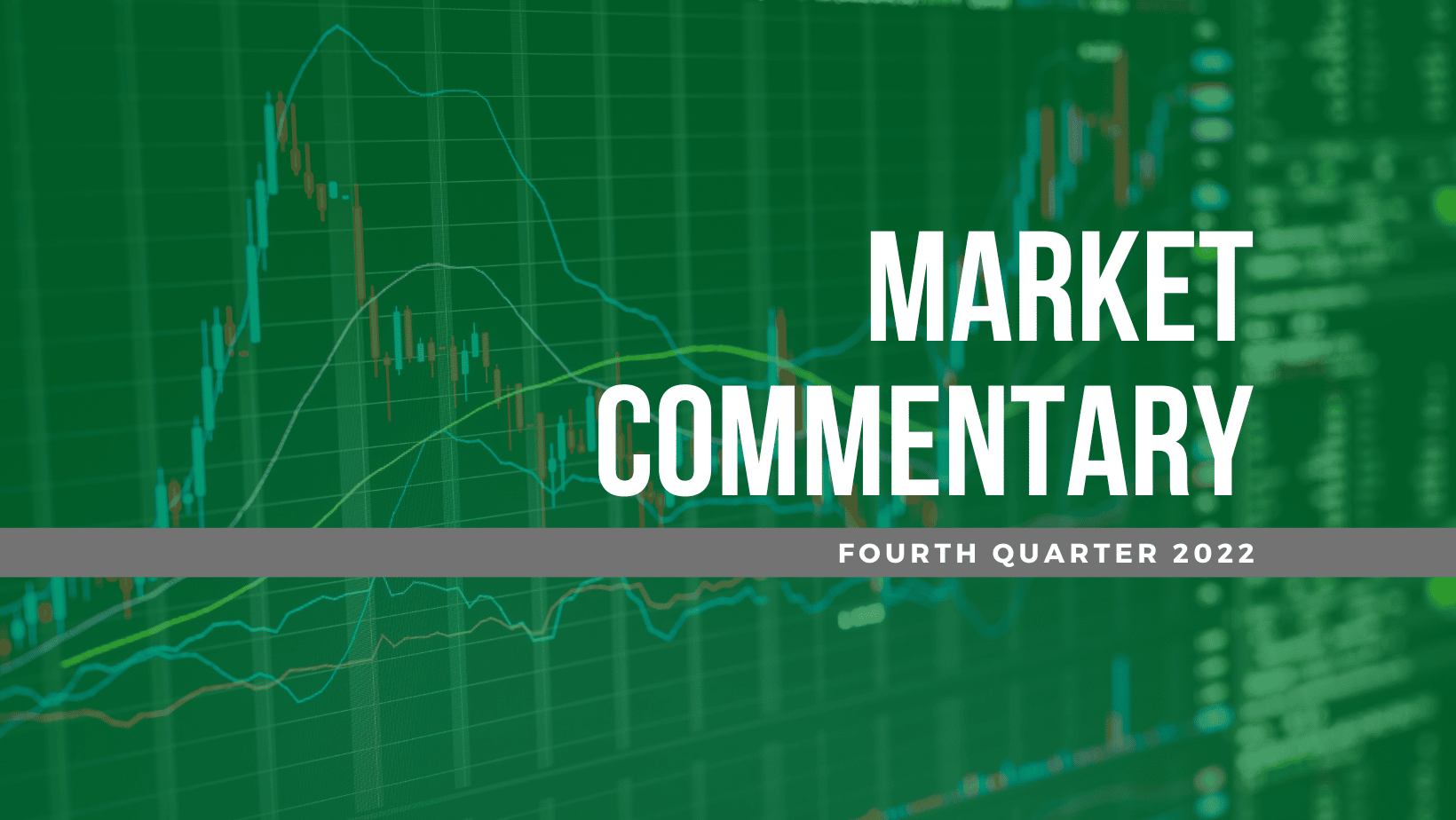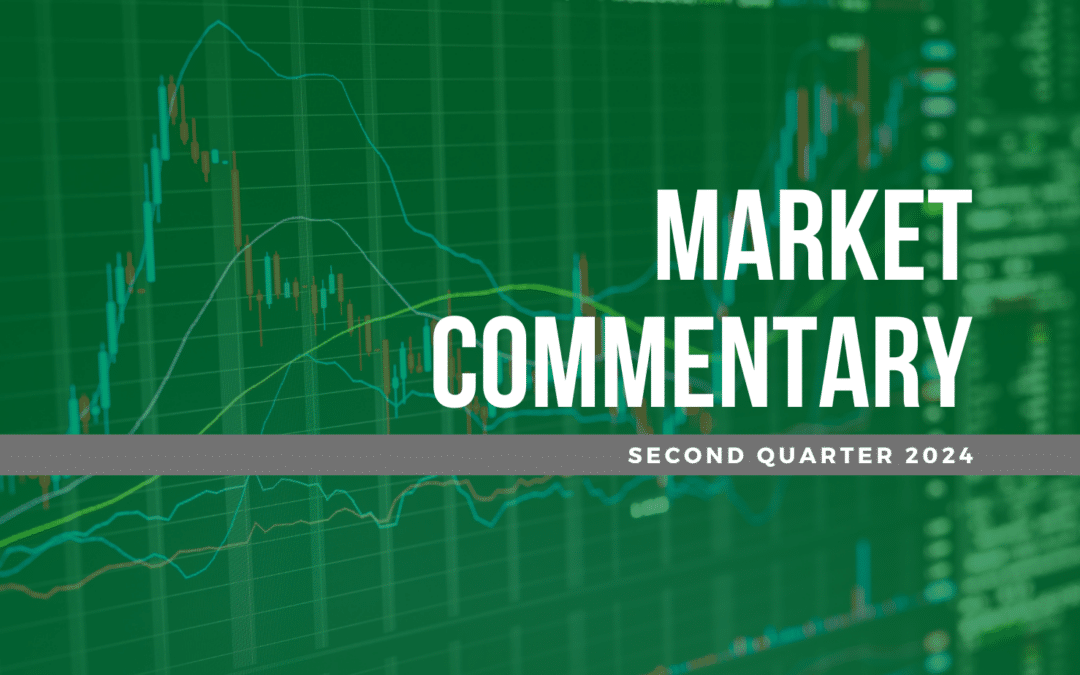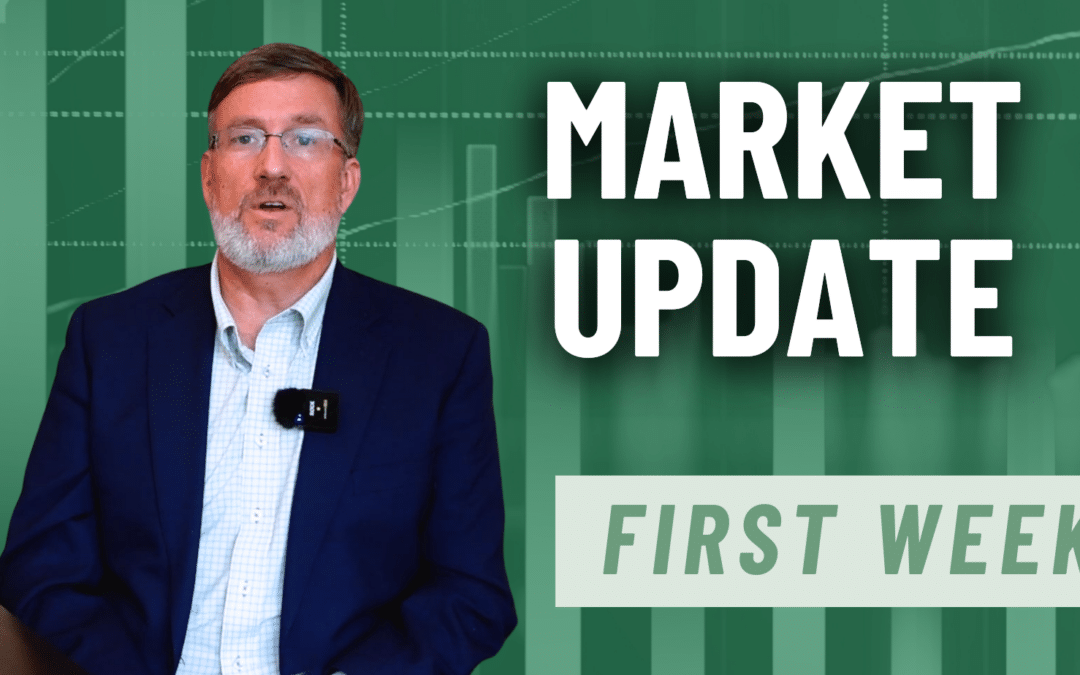Economic Overview
By Dr. Mark Pyles
Each time a calendar year is put into the rearview mirror, it is helpful – even if sometimes unpleasant – to review the primary drivers of both economic and market performance over the period. At the risk of over-simplifying, as we review 2022 nearly all economic and financial results can be traced back to a single stubborn variable – inflation. Relatedly, the Federal Reserve (Fed) spent the entirety of the year holding the firehose of financial constraint wide open on the US Economy in efforts to combat the resilient flames of higher prices.
To put these current actions in perspective, it is eye-opening to review where we were this time last year. During a testimony to Congress in late November 2021, Fed Chairman Jerome Powell finally retired the term “transitory” in describing inflation that had been far too hot for several months even at that point. As such, we plunged into 2022 knowing that financial tightening was in store. At the same time, both equity and debt valuations were stretched past historical trends. These forces combined for significant storm clouds to darken the prospects for 2022 – and those clouds indeed spent much of the year dropping rotating storms of uncertainty and pain on financial market participants.
Four times each year, the Federal Open Market Committee (FOMC) releases their Summary of Economic Projections (SEP). On December 15, 2021, they released the last such data for 2021. At that time, they projected a median Federal Funds Rate of 0.9% at the end of 2022. They further forecasted core PCE inflation – their preferred method for measuring the rate of price change – to be 2.7% at the end of 2022.
However, the new year brought drastic changes to both present reality and future projections. A couple of weeks ago, on December 14, 2022, the Fed raised their target rate by 50 basis points (BP) to a final range for the year of 4.25% to 4.50%. This brought the total tightening for the year to 425 basis points, or 17 hikes of 25BP each. That is far in excess of the three they expected a year previous. More so, Chair Powell strongly suggested that further hikes are on the table heading into 2023. For specificity, the SEP now predicts a 2023 year-ending fed funds rate level of 5.1%. And this value is likely misleading to the downside in terms of true effect, as it does not include the additional influences from the significant and ongoing reduction of the Fed’s Balance Sheet.
So, what caused such a drastic change from that which felt appropriate one year prior? Again, during 2022, inflation drove nearly everything. The Fed has been unequivocal in their goal of getting inflation to a 2% level. However, since December 2021, Core PCE inflation has maintained a range of 4.7% to 5.4% on a year-over-year (YoY) basis – clearly not in line with Fed desires. The Consumer Price Index (CPI), a more widely viewed measure by the average consumer, has experienced an even worst trend, peaking at 9.1% YoY in June 2022.
Thus, before we turn to some better news, the unrelenting reality is that inflation has stubbornly resisted taming throughout 2022 and the Fed has been equally unrelenting in their attempts to do just that. This has resulted in a very challenging economic backdrop in which to manage financial assets. However, there does indeed finally appear to be some good news on the inflation horizon. Since June, we have seen downward pressures on CPI to the current level for November of 7.1% YoY. The decline in headline numbers has been aided considerably by sharp decreases in energy prices. The national average price of a gallon of gas peaked at nearly $5.50 in mid-June before tumbling all the way down to current levels of around $3.85. Energy overall contributed 2.98% to headline CPI inflation in June, compared to only 0.99% in November. We have also seen a shift from goods inflation to services inflation. The former drove much of price pressures coming out of the pandemic but has now softened considerably. Goods inflation (excluding Food and Energy) contributed 2.48% to headline CPI in February 2022, but only 0.76% in November. On the other hand, contribution from services inflation continues to rise, from 2.19% at the end of 2021 to 3.93% at the November reading.
However, the fight is not yet won, at least in the eyes of the Fed. As of the December SEP, Fed officials forecast a core PCE of 3.1% at the end of 2023, still uncomfortably in excess of their 2.0% stated objective. They are clearly in fear that inflation pressures are becoming entrenched.
There is also the “problem” of the US labor market. This is perhaps the second most prevalent theme of the 2022 US Economy – a relentlessly strong job market. Despite the significant monetary tightening that has occurred, 2022 saw steady growth in employment figures. From January to November 2022, we experienced an average of 392K new non-farm payroll jobs per month. However, it is worth noting that the average was 457K in January through July, compared to only 277K in August through November. This, combined with the four-week average initial jobless claims increasing from 206K in late September to the current levels in excess of 220K shows at least some softening.
This would be, ironically, welcome news to the Fed in their fight against inflation. Wage growth is something the Fed is undoubtedly paying close attention to, with average hourly earnings up 5.1% YoY as of the most recent employment report from the Bureau of Labor Statistics. Further, the unemployment rate currently still stands at a very robust 3.7%, only slightly up from a historically low 3.5% in July. This differs substantially from the Fed’s most recent SEP projection of 4.6% by the end of 2023. Despite the well-documented lag in labor market data, this provides reason to believe the Fed will continue their fight against inflation. Further, it is likely that winning the fight will require some pain in the labor market during 2023.
Despite some positive economic momentum in the second half of 2022, 2023 will come with more uncertainty revolving around the health of US. economic growth, and most would admit a real possibility of a recession at some point during the year. If that happens, as we have spoken of in these pages in previous quarters, it will likely be driven by a fall in consumer spending. Making up more than two-thirds of GDP, the American consumer regularly surprises to the upside in their spending behavior. And this year has seen a resilient consumer, although one unquestionably spending less than the reopening and stimulus-fueled version of the previous year. Over the first three quarters of 2022, personal consumption expenditures increased by an average of 1.9% each quarter, a number which is likely to be further buoyed when Q4 results come in.
However, consumers have maintained their spending at a cost. There is clear evidence of dwindling savings. Over the five years prior to the onset of COVID, consumers had an average savings rate – as measured by savings as a percentage of disposable income – of nearly 7.7%. During the pandemic period, where we had little choice but to save money and were aided in doing so by federal stimulus checks, this number ballooned to 17.7%. That number now stands at a paltry 2.4%. In addition, revolving credit as measured by the Fed has increased from the cyclical low of $972B in January of 2021 to the current level of $1.17T at the end of October 2022.
This is all occurring at the same time that we are seeing a significant rolling over of the housing market. The average rate on a 30-year mortgage approximately doubled during the year, from 3.3% to the current levels of 6.6%. While the good news is that this does not dramatically affect the majority of Americans who are locked into their existing lower-rate mortgages, the bad news is that it has naturally thrown cold water on demand for new purchase. Existing and new home sales, housing starts, housing permits, and a litany of survey results support the clear evidence of a rapidly declining demand for housing. House prices, which as recently as April 2022 were showing 20%+ YoY increases, have now been declining on a month-over-month basis since.
In reading all of this, there is a natural digestive reaction that desires a conclusion. Our current belief is that inflation will indeed continue a rather rapid decline, which should serve to finally give the Fed reason to pause and re-evaluate the effect of existing tightening. Unfortunately, we now also view the risks of excessive financial constraint to be elevated. We also believe economic growth will continue to slow throughout the coming year. These two merging headwinds do unfortunately combine to create an elevated probability of a recessionary environment sometime in the next 12-18 months.
The positive aspect is that financial markets often precede economic realities and, after a very rough 2022 in both equity and debt markets, valuations look considerably better for both. We are also confident that we are indeed near the end of the Fed’s hiking process. As such, while we remain necessarily cautious in the present about both economic and financial markets prospects, we are eagerly anticipating the recovery to come.
The Stock Market
By Walter Todd
As I watched the ball fall in Times Square on New Year’s Eve (while also watching the end of the Peach Bowl), I have to admit I was glad to bid farewell to 2022. While the stock market “got up off the mat” in the fourth quarter, this past year was still the worst performance for the S&P 500 since 2008. Add in a negative return for fixed income as well and 1/1/23 could not come soon enough. Dr. Mark Pyles detailed in the Economic Overview above the main reason for the challenging backdrop in financial markets in 2022. These inflation headwinds for the market reached a crescendo early in the fourth quarter with a “hot” CPI reading for inflation on October 13. The market hit a bottom for the quarter – and the year – that morning, subsequently rallying over 17% to the high on December 1st. The normal positive seasonality of December failed to materialize, however, with the month down nearly 6%. Overall, the positive quarter was a nice reprieve from an otherwise “Annus Horribilis” for financial markets (Queen Elizabeth’s reference from last quarter’s President/CIO letter). Let’s examine the details.
For the quarter, the S&P 500 Index closed up +7.6%, including dividends, while finishing the year down -18.1%. Small-cap stocks (as measured by the S&P 600) performed better, ending the quarter higher +9.2% and returning -16.2% year-to-date. This was again different from another small cap index, the Russell 2000, which was +6.2% for the quarter and -20.5% YTD. International stocks staged a strong rally in the most recent quarter as the US Dollar (USD) weakened during the period. Developed International Markets rose by +17.4% for the quarter (as measured by the EAFE Index). Emerging Markets (EM) were not quite as robust but still gained +9.6% for the quarter (measured by the MSCI Emerging Market Index). For 2022, Developed International and Emerging Markets ended lower by -13.9% and -19.9%, respectively. Putting the US and International Markets together, the MSCI All-Country World Index (ACWI) finished up by +9.9% for the three-month period and ended down -18.0% for the year. In addition to the USD factor, the outperformance of international markets was also influenced by the sector weighting differentials vs. the US stock market. International markets collectively have more exposure to resource-related sectors like Energy and Materials, and as important, less exposure to Technology and Communication Services. See the paragraph below for more details on sector performance.
In the US market, from a sector perspective, 9 of 11 sectors were positive for the quarter, with 7 of 11 outperforming the overall market. Sector performance for the quarter came in surprisingly pro-cyclical, with Energy, Industrials, Materials and Financials as the top four sectors, rising between 13% and 23%. Healthcare and Consumer Staples were not far behind with each higher by nearly 13% for the three-month period. Consumer Discretionary (-10%) and Communication Services (-1%) were the only sectors in the negative in 4Q with Consumer Discretionary heavily influenced by negative performance of two large weights, Tesla and Amazon. Technology and Real Estate were positive 4% to 5% but underperformed the market while Utilities were up over 8%. For the year, it was Energy (+65%) and then everything else. Utilities did eke out a small gain (+2%) on the year and Consumer Staples and Healthcare were each down less than -2% – a defensive grouping ex. Energy at the top. Real Estate, Technology, Consumer Discretionary, and Communication Services all dropped in excess of -26% for the year, with the latter two falling more than -37% over the past 12 months.
As we look toward 2023, the consensus outlook for the market has become a challenging first half of the year followed by a recovery in the second half. While the consensus can be right, the ubiquity of this outlook leads me to question it. Could positive economic momentum and China reopening lead to the opposite outcome, meaning a better first part of the year followed by difficult finish as the full impact of the 2022 Fed rate hikes hit the economy? Or could the entire year of 2023 be similar to 2022, high volatility with sharp rallies but ultimately down for the twelve-month period? On this latter scenario, we would note that we only have two examples of consecutive down years for the stock market in the past 80 years – 1973-74 and the three years from 2000 through 2002. The current market backdrop shares some similarities with both of these periods – the high inflation of the 1970s and the high Technology/Market valuations of the early 2000’s. The good news is even in these difficult periods, there were areas of the market that worked relatively well – resource and energy stocks in the 1970s and healthcare, staples and financials during the technology bust in 2000-2002. All of these are areas in which we are currently paying close attention. In addition, as Dr. Pyles stated above, we know that both inflation and valuations are moving in the right direction for better forward returns in the future.
Finally, as we reflect back on 2022, we added value through our sector allocation within our equity strategies; overweighting Healthcare and Energy and underweighting Technology were significant positives for us. Stock selection; however, negatively impacted performance for the year. Some of this can be attributed to overall industry group exposure (semiconductors for example) or challenged factor exposures (e.g., more growth-oriented equities in our SMID strategy) while other dynamics were very company specific circumstances, such as the timing and financing of acquisitions. I would highlight our Dividend Income equity strategy performed particularly well on a relative basis to the overall market for the year given its overweights to more value-oriented factors and sectors. Overall, we will strive to maintain the benefits of our sector allocation while improving on our individual stock selection in 2023.
The Bond Market
By John Wiseman
Most fixed income instruments turned in a positive fourth quarter, but it did little to offset the worst annual returns in decades and the only consecutive years of negative returns in the history of the Bloomberg Treasury Index that dates to the early 1970s. The bond market is trying to anticipate the point when economic data provides the Federal Reserve the opportunity to stop raising interest rates. Some suggest we are past that point given the lagged effects of Fed policy and weaker incoming economic data.
The yield on the 2-Year Treasury note increased by 15 basis points (0.15%) this quarter to 4.43%, which is a staggering 370 basis points (3.70%) higher than the start of the year. The resulting total returns for those periods are +0.45% for the quarter and -4.20% for the year. The yield on the 10-Year Treasury Note finished the quarter at 3.87% which is 4 (0.04%) and 236 basis points (2.36%) higher on the quarter and year, respectively, resulting in total returns of +0.65% and -16.28%. The best performing portion of the yield curve for the fourth quarter was the 5-Year area. As we saw this quarter, rates may drift a little higher, but there is finally a good amount of coupon income to offset the negative effects of higher rates from here. This is a much more positive environment than when we entered 2022.
Corporate bonds had another strong quarter relative to Treasuries with an outperformance of 170 basis points (1.70%) but could not overcome the weak start to the year. For the year, corporates trailed Treasuries by 200 basis points (2.00%). The spread of the Bloomberg Intermediate Corporate Index finished the quarter 23 basis points narrower producing a return of 2.72% but ended the year down -9.4% on a total return basis. The overall yield of this index reached above 6%, the highest level in 13 years before ending around 5.3%. Corporate bond issuance is expected to expand from a slow 2022. This will be an area to watch since issuance yields will cost companies 3%+ over last year’s rates using intermediate corporate bond yields as a proxy.
Municipal bonds were the best relative performers in fixed income. The Bloomberg 5-Year Municipal Index ended the quarterly period with a total return of 3.08% but remained down for the year with a total return of -5.77%. The ratio of the 5-Year Municipal to Treasury, a measure of relative value, is 64% which is near the lowest levels of the year and well below the ten-year average. Issuance of municipal bonds is about 15% below last year according to data compiled by Bloomberg. Municipal bonds are attractive for those in higher tax brackets, but there is competing value in other areas of fixed income for most investors.
Coming into 2022, we had doubts that inflation was “transitory” as the Fed suggested; however, once the hiking cycle began, we could not foresee the Fed raising rates as much as they did. Broadly speaking, our duration positioning was a positive to performance as shorter-dated bonds outperformed longer ones. The bond indices are heavily weighted to government bonds. We like the extra yield that corporate bonds provide and will be overweight that sector relative to the benchmark in most environments. This overweight detracted from performance in 2022 even though our security selection of higher quality corporate bonds was a positive. The same goes for the municipal market as high-quality general obligation and essential service revenue bonds generated good relative performance.
| Market Indicators | ||||
| Source: Bloomberg |
QTD 2022 Total Return1 |
YTD 2022 Total Return2 |
52 Week Total Return3 |
|
| S&P 500 | 7.55% | -18.13% | -18.13% | |
| DJIA | 16.01% | -6.86% | -6.86% | |
| NASDAQ | -0.78% | -32.51% | -32.51% | |
| S&P 400 | 10.76% | -13.10% | -13.10% | |
| S&P 600 | 9.16% | -16.15% | -16.15% | |
| MSCI EAFE | 17.40% | -13.92% | -13.92% | |
| MSCI Emerging Markets | 9.62% | -19.94% | -19.94% | |
| MSCI ACWI ex. US | 14.32% | -15.57% | -15.57% | |
| MSCI ACWI | 9.86% | -17.96% | -17.96% | |
| Bloomberg Barclays Int. Gov’t/Credit | 1.54% | -8.23% | -8.23% | |
| Bloomberg Barclays Aggregate Bond | 1.87% | -13.01% | -13.01% | |
| Barclays 5-Year Municipal | 3.05% | -5.26% | -5.26% | |
| 1) 09/30/22 to 12/31/22 2) YTD through 12/31/22 3) 12 Months Ended 12/31/22 | ||||
The information contained within has been obtained from sources believed to be reliable but cannot be guaranteed for accuracy. The opinions expressed are subject to change from time to time and do not constitute a recommendation to purchase or sell any security nor to engage in any particular investment strategy. Investment Advisory Services are offered through Greenwood Capital Associates, LLC, an SEC-registered investment advisor.






